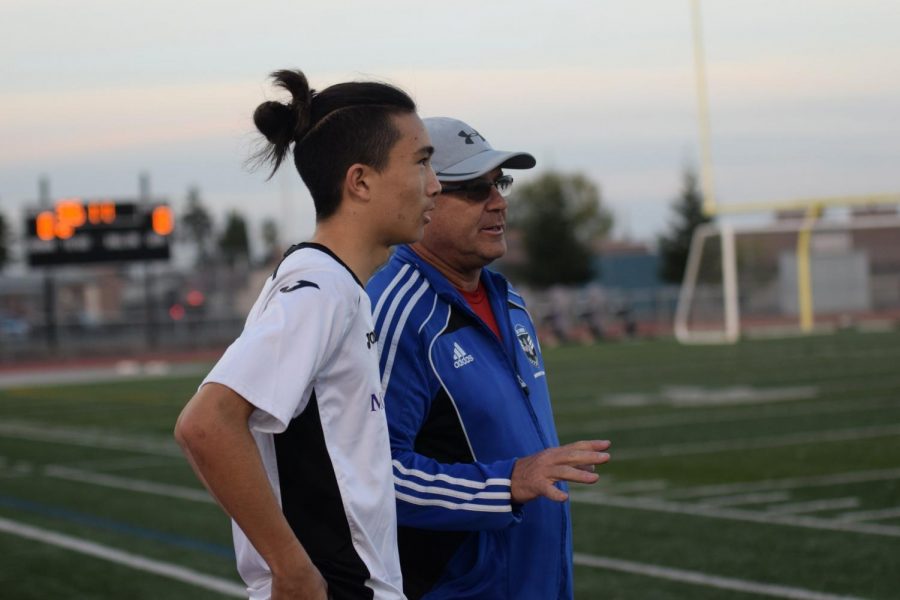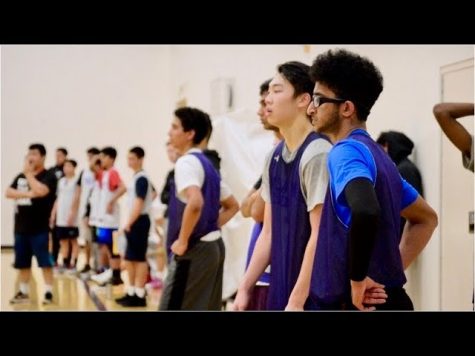The film room
Exploring the use of video software like Hudl and Krossover in preparation for game day
He noticed a trend among the athletes huddled in front of him. Every time he tried to recount certain plays from the game the night before, he was often met with blank faces, the players not quite understanding what he was talking about. It wasn’t until the start of the 2019 season that boys soccer coach Todd Kimble resorted to a cyber companion — Hudl.
Used by both the football and boys soccer teams, Hudl is an online software that works with the recordings of games, allowing coaches to draw on certain clips and tag players. Players and their coaches can interact with the online interface, which allows for more personalized feedback. According to soccer captain and senior Avi Libman, Hudl has provided his team with numerous benefits since its introduction.
“We wanted a way for us to record our games,” Libman said. “Hudl provided another level of technology that allowed us to break down the games into different parts. [We could] see at what times teams possess the ball [and] watch the videos [as a team].”
Kimble has had prior experience using Hudl with his club team and decided that it was the best software to use for his team. He explained that Hudl has helped his team better visualize scenarios and bridged the understanding between him and his team.
“There are scenarios that I try to explain that I remember from the game,” Kimble said. “I was explaining them to the boys and they couldn’t get it. They couldn’t see the picture that I was painting, nor could they remember the incident from the game.”
Ranging from 400 dollars to 3,000 dollars per season, Hudl might come across as a hasty commitment for teams that purchase its software. Libman expressed that the high price of Hudl could potentially be used for other things, as the team could break down the video without the help of an external source.
“I don’t see it being such a necessity,” Libman said. “With the price of it, maybe just having someone record the game in a normal quality, we could just break it down ourselves. [But] with the budget we got, it was some sort of system that worked for us. “
The reason that drove Kimble to choose Hudl was the cross-platform capabilities of the software. It is made easily available on a variety of devices from smartphones to laptops, allowing athletes to access videos and messages anywhere and anytime.
“I just wanted to have a visual representation so that I could show them what I see,” Kimble said. “What that does is it first of all gives them the picture that I’m trying to paint and I can draw and give my comments but secondly, it also puts the [game] into snippets. By doing that, they can view quick highlights and things like that at their rate.”
Kimble has noted in this current generation of athletes is that they are more attracted to visual learning, which Hudl is perfect for. He thinks that the generation’s low attention span calls for the use of videos.
“They’re more interested in going in there and actually viewing the video,” Kimble said. “They are a little bit more engaged. I have seen some kids change the way they play or make adjustments based on what we have talked about, but it’s so early in the development that [it] is kind of hard.”
Hudl is not the only type of software used by MVHS sports teams. Both boys volleyball and football also use Krossover, a similar application. Unlike Hudl, Krossover breaks down the stats of each player and team in the video and is equipped with data visualizations and player specific tags. Volleyball player and junior William Liou says that Krossover has been extremely helpful in the improvement of his skills.
“I like watching [myself] play and seeing where [I] could have done something better,” Liou said. “One thing that makes it really easy is that it filters out your name for every play. You don’t have to watch every play. You can just instantly filter the moment you’re in that play, and you can see you know what your form is bad, you know where they made the wrong choice there, what you could have done better, just a lot of self reflection.”
Liou also credits part of his team’s success to Krossover, and agrees with Kimble that the video aspect of the software does create a profound impact in their learning as a team. He believes that the numerous statistical insights provided by such softwares, coupled with that of their opponents, allows players to strive to succeed athletically.
“Athletes at this school, particularly, for really competitive sports, like volleyball, are always striving to get better so we can get an advantage on the opposing teams,” Liou said. “Sometimes it’s hard to do that without a coach. Being able to look at yourself play all the time, and comparing yourself to other players is a really good way [to improve].”
With the increase in technology in MVHS’s daily academic scene, it comes to no surprise that athletic teams are indulging in software, which virtually helps them improve their games and plays.
Kimble likens sports and academics, as he personally noticed that students have started to put a label on their achievements – whether it is playing to get the number one spot or improving with each game. He says that Hudl and Krossover serve as a reward – or punishment – to satisfy their expectations in their athletic pursuits.
“I think that [technology] is both wonderful and problematic. It has an amazing ability to breakdown so many things,” Kimble said. “On the other hand, you can lost in the data and forget what you’re really trying to accomplish.”





